Effects of Parameters of Air-Avid Structure on the Salt-Frost Durability of Hardened Concrete
Abstract
:1. Introduction
2. Materials and Test
2.1. Test Materials
2.2. Mixing Ratio of the Concrete
2.3. Test Equipment and Methods
3. Result Discussion and Analysis
3.1. The Relationship between Air-Void Parameters of Fresh Concrete and Hardened Concrete
3.2. The Relationship between Air-Void Parameters and Salt-Frost Resistance of the Concrete
3.2.1. Air Content of Fresh Concrete
3.2.2. Air-Void Spacing Factor
4. Conclusions
- (1)
- The air content of hardened concrete was linearly correlated with that of fresh concrete and showed an average loss of about 16% in comparison with that of the fresh concrete.
- (2)
- The air-void spacing factor was closely related to air content. The air-void spacing factor showed a decreasing trend in the form of a power function with the increase of air content, and was more closely correlated with the air content of hardened concrete compared with that of fresh concrete.
- (3)
- The compressive strength of concrete linearly changed with increasing air content, with the correlation coefficient of 0.76. Moreover, there was a certain linear relationship between the compressive strength of concrete and the air-void spacing factor, showing the correlation coefficient of 0.57.
- (4)
- In comparison with air content, the salt-frost resistance of the concrete was more closely correlated with the air-void spacing factor. When the air-void spacing factor was smaller than 0.18 mm, the effect of air-void parameters on the salt-frost resistance of the concrete showed a decreasing trend. If the air content of fresh concrete is adopted to control the quality of concrete, 6% is recommended as the standard.
Author Contributions
Funding
Conflicts of Interest
References
- Mehta, P.K.; Monteiro, P.J. Concrete Microstructure, Properties and Materials; Tan, W., Wang, D., Ding, J., Eds.; Power Press: Beijing, China, 2008. [Google Scholar]
- Power, T.C.; Helmuth, R.A. Theory of volume change in hardened Portland cement pastes during freezing. Proc. Highw. Res. Board. 1949, 32, 285–297. [Google Scholar]
- Du, L.; Folliard, K.J. Mechanisms of air entrainment in concrete. Cem. Concr. Res. 2005, 35, 1463–1471. [Google Scholar] [CrossRef]
- Fagerlund, G. Scaling, freezing absorption and dilation of cement mortars exposed to Freezing and thawing in NaCl solution. In Freeze-Thaw of Concrete; E&FN Spon: Lund, Skane County, Sweden, 1997. [Google Scholar]
- Zhang, H.; Ding, J.T.; Gao, P.W. Analysis on the air-void system test methods of concrete. Low Temp. Archit. Technol. 2009, 12, 7–9. [Google Scholar]
- Giergiczny, Z.; Glinicki, M.A.; Sokołowski, M.; Zielinski, M. Air void system and frost-salt scalingof concrete containing slag-blended cement. Constr. Build. Mater. 2009, 23, 2451–2456. [Google Scholar] [CrossRef]
- Huaquan, Y.; Shihua, Z.; Jie, S. Effect of Air Void Parameters on Properties of Air Entraining Concrete. Water Power 2009, 35, 1–3. [Google Scholar]
- Zhang, J.; Guo, M.Y.; Yang, R.J.; Zhang, L. Effect of Air-entraining Admixtures on the Structure and Properties of Hardened Concrete. J. Wuhan Univ. Oftechnol. 2008, 30, 38–41. [Google Scholar]
- Hazrati, K.; Abesque, C.; Pigeon, M. Efficiency of sealers to prevent the deicer salt scaling resistance of concrete. In Proceedings of the International Workshop on the Resistance of Concrete to Freezing in the Presence of Deicing Salts, Quebec, QC, Canada, 30–31 August 1993; pp. 191–228. [Google Scholar]
- Pigeon, M.; Marchand, J.; Pleau, R. Frost resistant concrete. Constr. Build. Mater. 1996, 10, 339–348. [Google Scholar] [CrossRef]
- Hui, Z.; Yonqiang, P.; Jian, Z.; Lei, Z. Influence Factors of Frost-Salt Resistance of Cement Concrete. J. Chongqing Jiaotong Univ. 2013, 4, 34–37. [Google Scholar]
- Setzer, M.J.; Auberg, R. Freezeing-thaw and decing salt resistance of concrete testing by CDF method, CDF resistance limit and evaluationof precision. Mater. Struct. 1995, 28, 16–31. [Google Scholar] [CrossRef]
- Zhang, H.; Gao, P.; Pan, Y.; Zhang, Z. Effects of surface states on salt-frost scaling resistance of cement concrete. Case Stud. Constr. Mater. 2019, 11, 1–7. [Google Scholar] [CrossRef]
- Wang, F.; Zhang, Z.; Li, M.; Huang, D.; Zhu, Y. Influence of Chloride Solution Concentration Difference on Salt Frost Scaling of Concrete. J. Build. Mater. 2014, 17, 138–142. [Google Scholar]
- Liu, Y.; Chen, Y.; Niu, W. Effects of water-binder ratio and gas content on the frost-salt resistant ability of concrete. Concrete 2019, 4, 63–65. [Google Scholar]
- Guo, Y.C.; Shen, A.Q.; Zheng, P.F.; Li, P. Study on Salt-freeze Resistance of Bridge Deck Concrete in Alpine Region. J. Highw. Transp. Res. Dev. 2019, 36, 73–79. [Google Scholar]


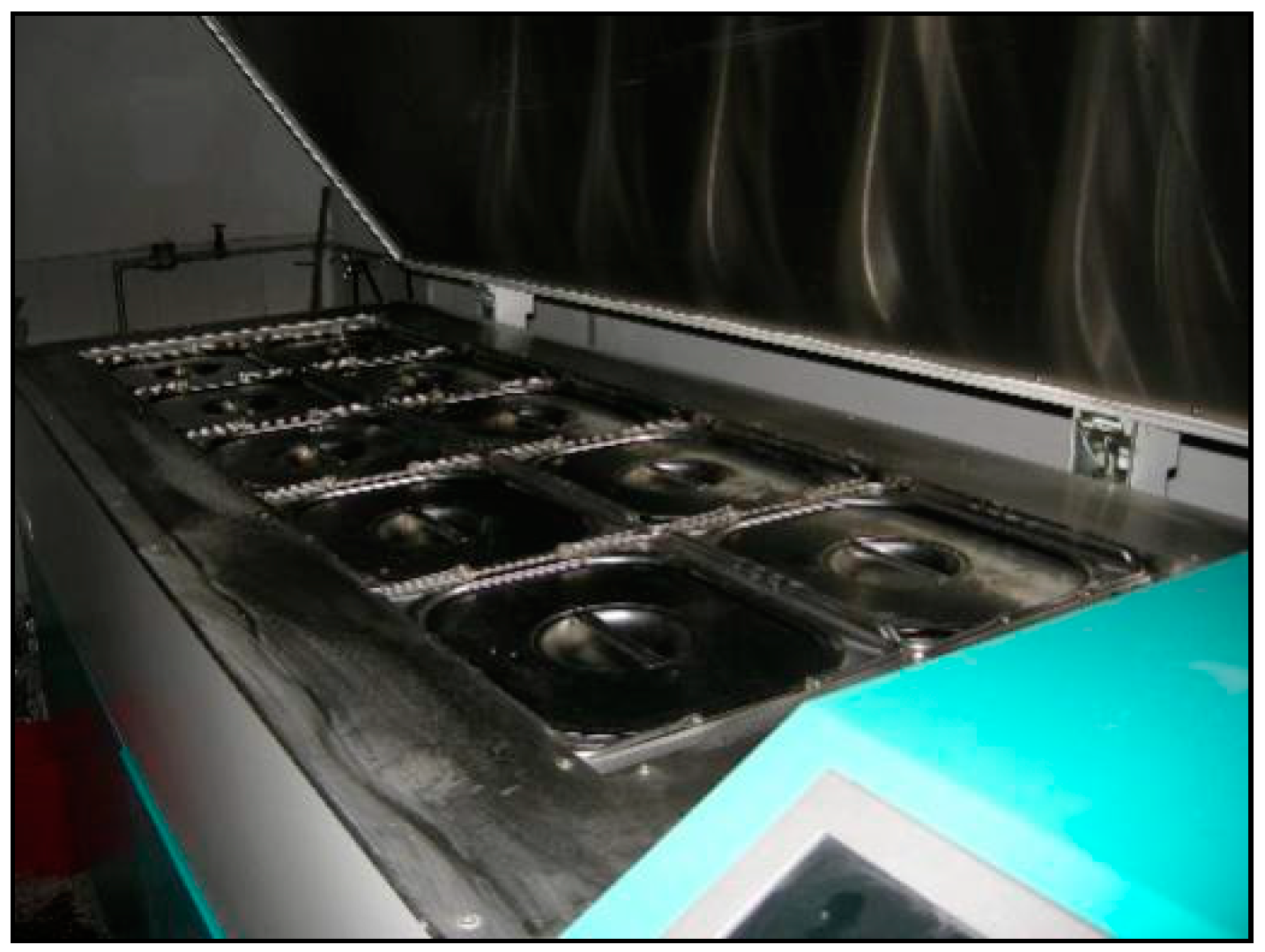
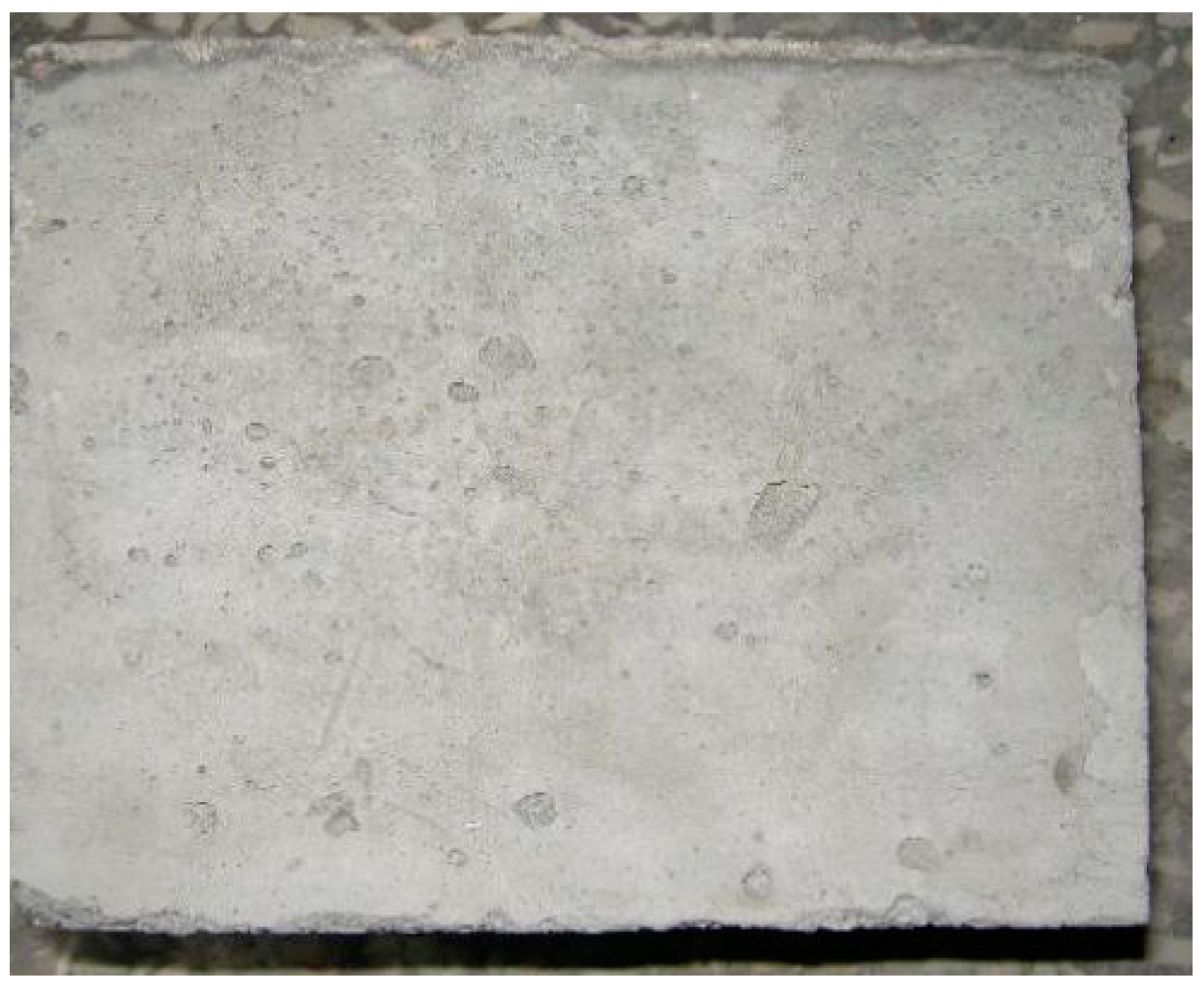
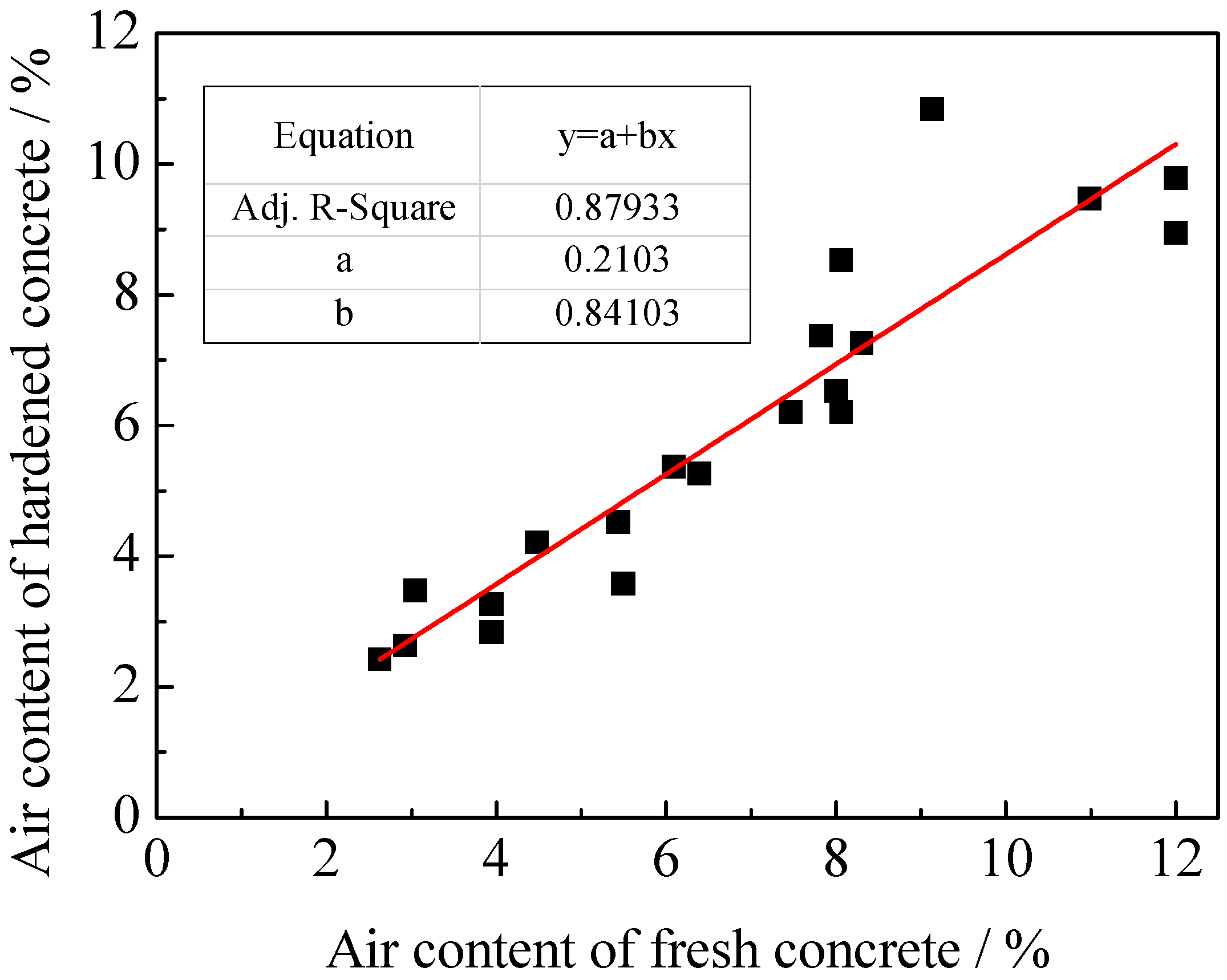
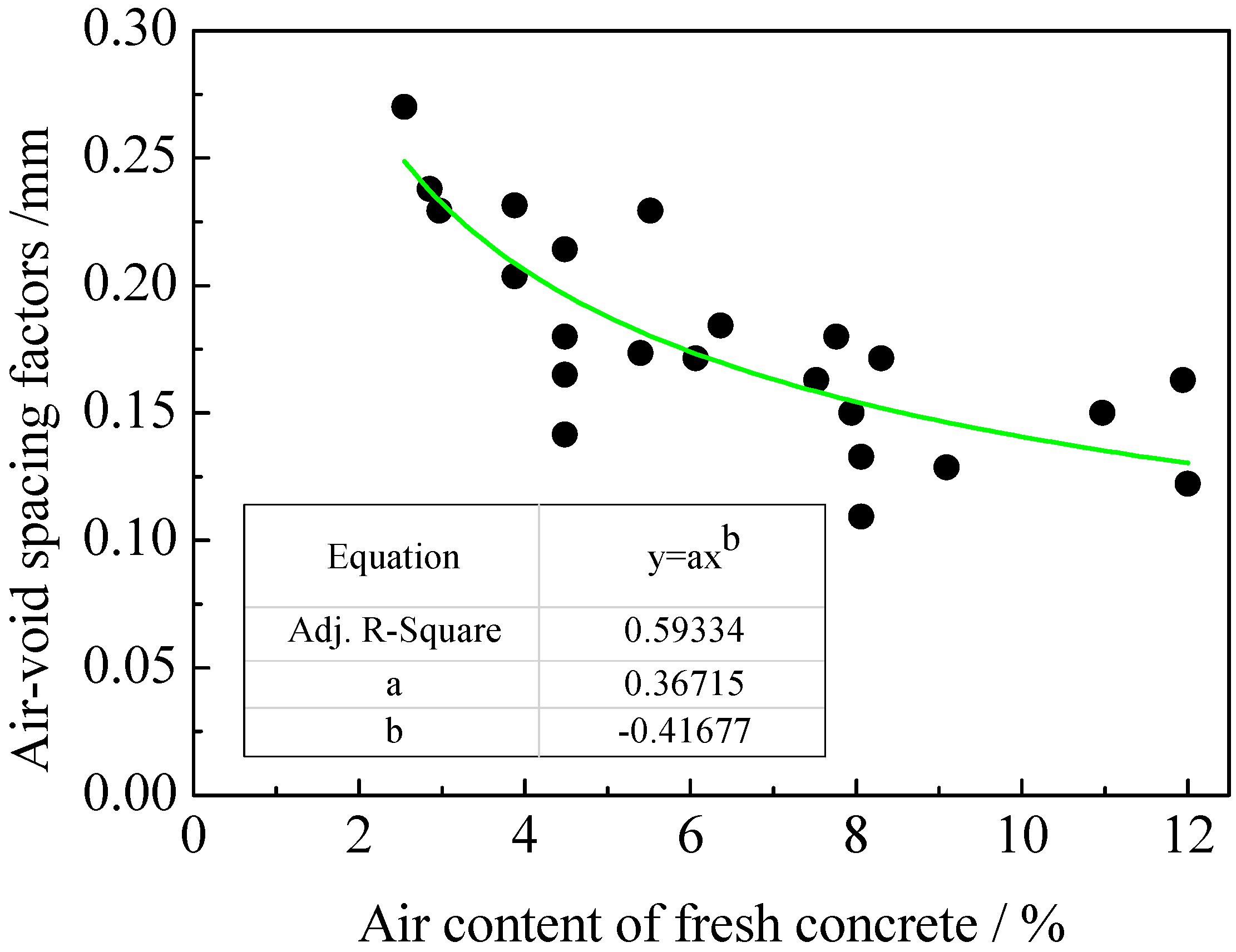



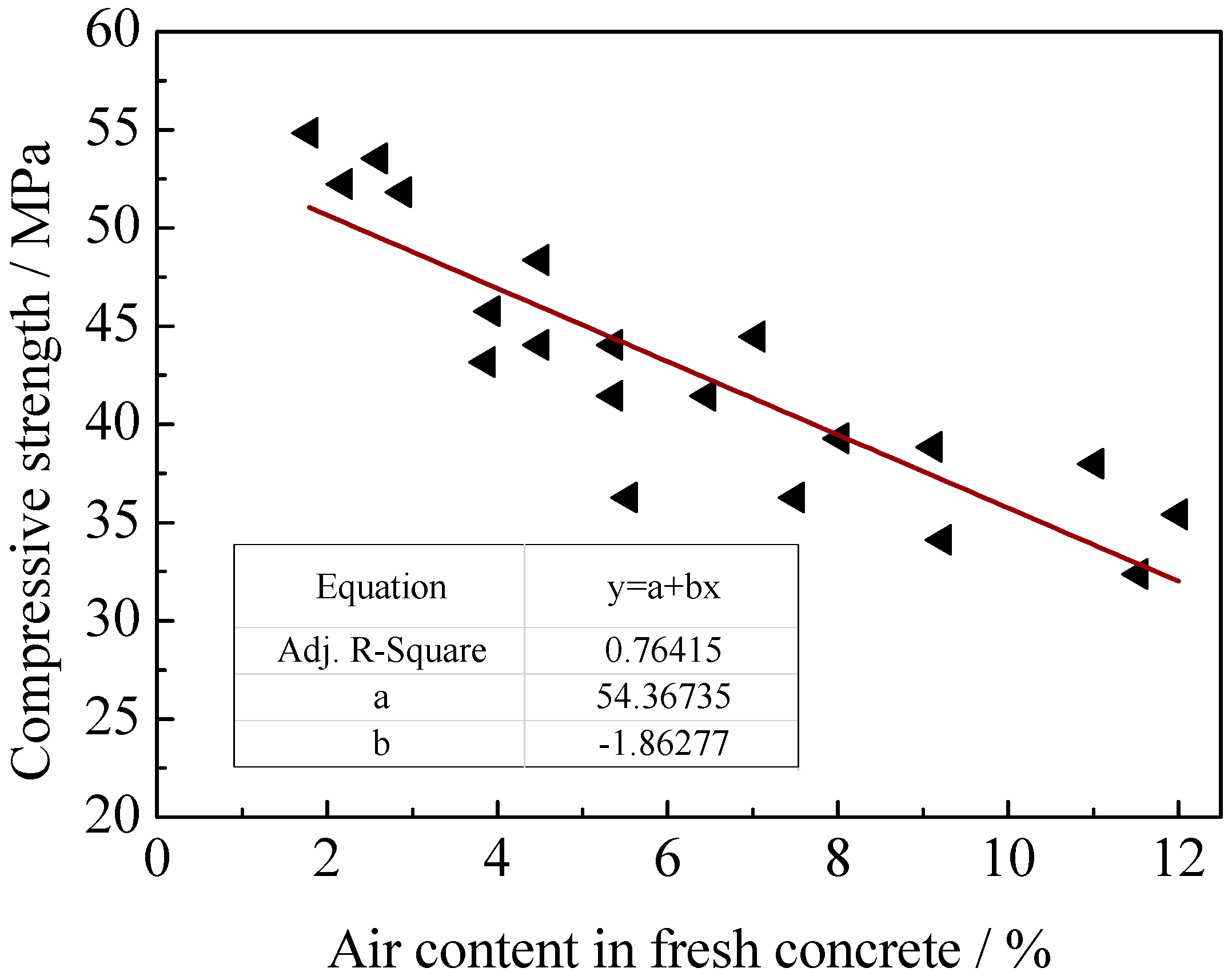


| SiO2 | CaO | MgO | Fe2O3 | Al2O3 | K2O | Na2O | SO3 | Alkali Content |
|---|---|---|---|---|---|---|---|---|
| 22.71 | 66.10 | 1.90 | 2.85 | 4.57 | 0.68 | 0.15 | 1.37 | 0.50 |
| Grain Size/mm | Apparent Density/(kg/m3) | Voidage/% | Bulk Density/(kg/m3) | Saturated Surface Dry Water Absorption/% | ||
|---|---|---|---|---|---|---|
| Loose | Dense | Loose | Dense | |||
| 5~40 | 2670 | 51.68 | 41.2 | 1290 | 1570 | 1.27 |
© 2020 by the authors. Licensee MDPI, Basel, Switzerland. This article is an open access article distributed under the terms and conditions of the Creative Commons Attribution (CC BY) license (http://creativecommons.org/licenses/by/4.0/).
Share and Cite
Zhang, H.; Gao, P.; Zhang, Z.; Pan, Y.; Zhang, W. Effects of Parameters of Air-Avid Structure on the Salt-Frost Durability of Hardened Concrete. Appl. Sci. 2020, 10, 632. https://doi.org/10.3390/app10020632
Zhang H, Gao P, Zhang Z, Pan Y, Zhang W. Effects of Parameters of Air-Avid Structure on the Salt-Frost Durability of Hardened Concrete. Applied Sciences. 2020; 10(2):632. https://doi.org/10.3390/app10020632
Chicago/Turabian StyleZhang, Hui, Peiwei Gao, Zhixiang Zhang, Youqiang Pan, and Weiguang Zhang. 2020. "Effects of Parameters of Air-Avid Structure on the Salt-Frost Durability of Hardened Concrete" Applied Sciences 10, no. 2: 632. https://doi.org/10.3390/app10020632
APA StyleZhang, H., Gao, P., Zhang, Z., Pan, Y., & Zhang, W. (2020). Effects of Parameters of Air-Avid Structure on the Salt-Frost Durability of Hardened Concrete. Applied Sciences, 10(2), 632. https://doi.org/10.3390/app10020632





